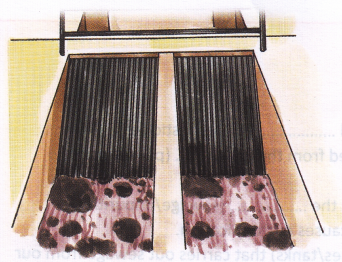Wastewater Treatment Plant
A facility that treats wastewater from domestic as well as industrial sources is called a wastewater treatment plant. There are basically three stages involved in treating wastewater: primary, secondary, and tertiary.
Primary Treatment
This is a mechanical process which involves screening and settling of large particles. First, the sewage is passed through screens of vertical bars to remove larger impurities such as metal cans, plastic bags, cloth pieces, etc. The wastewater is then passed through a grit and sand removal tank called the grit chamber.
The speed of the incoming wastewater is reduced so that sand, grit, pebbles, etc., settle down. The water is then passed through huge sedimentation tanks. Here solid wastes such as faeces is allowed to settle down and the light floatable waste such as soaps, oils, plastics, and grease rise. Solid waste that settles at the bottom in the primary treatment of wastewater is called the sludge. Light waste that rises to the top and floats, during wastewater treatment, is called the scum. The water that comes out of the sedimentation tanks is called clarified water.


Secondary Treatment
This is a biological process in which the organic matter in the sludge is broken down with the help of bacteria. This process is called digestion and as a result of it, biogas is produced. The biogas can be used either as a fuel or to produce electricity. The treatment at this stage can be speeded up by allowing water to flow into large aeration tanks, where air is blown onto the sewage.

Tertiary Treatment
This is basically a chemical process in which chemicals are used to remove phosphorus and nitrogen from the water. Addition of chlorine and exposure to ultraviolet light kills any remaining bacteria and disinfects the water. The water is then discharged into water bodies.

